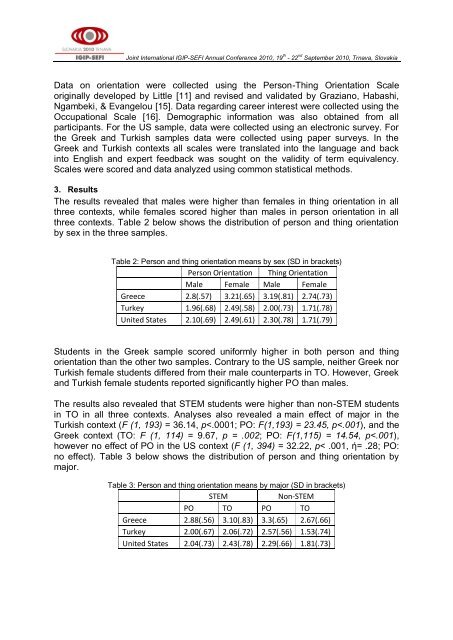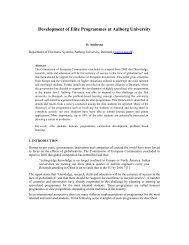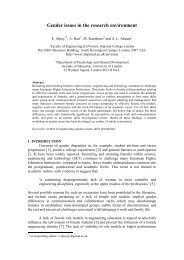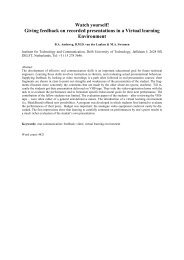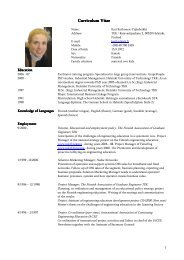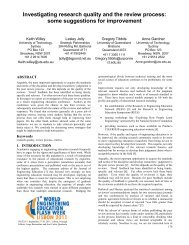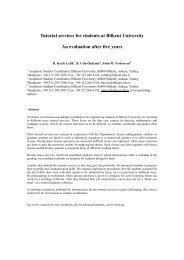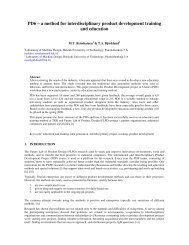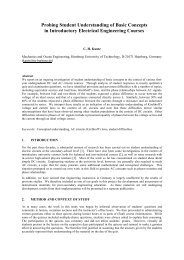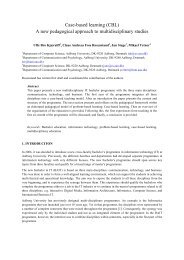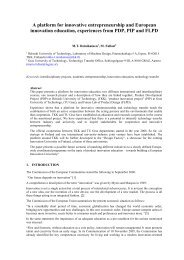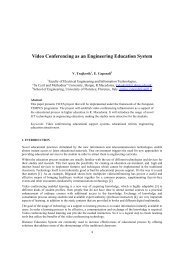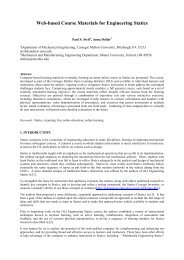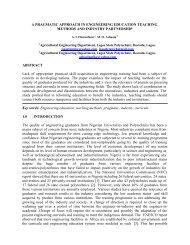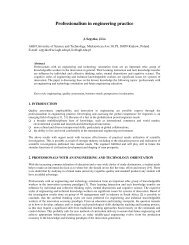1250 - SEFI
1250 - SEFI
1250 - SEFI
Create successful ePaper yourself
Turn your PDF publications into a flip-book with our unique Google optimized e-Paper software.
Joint International IGIP-<strong>SEFI</strong> Annual Conference 2010, 19 th - 22 nd September 2010, Trnava, Slovakia<br />
Data on orientation were collected using the Person-Thing Orientation Scale<br />
originally developed by Little [11] and revised and validated by Graziano, Habashi,<br />
Ngambeki, & Evangelou [15]. Data regarding career interest were collected using the<br />
Occupational Scale [16]. Demographic information was also obtained from all<br />
participants. For the US sample, data were collected using an electronic survey. For<br />
the Greek and Turkish samples data were collected using paper surveys. In the<br />
Greek and Turkish contexts all scales were translated into the language and back<br />
into English and expert feedback was sought on the validity of term equivalency.<br />
Scales were scored and data analyzed using common statistical methods.<br />
3. Results<br />
The results revealed that males were higher than females in thing orientation in all<br />
three contexts, while females scored higher than males in person orientation in all<br />
three contexts. Table 2 below shows the distribution of person and thing orientation<br />
by sex in the three samples.<br />
Table 2: Person and thing orientation means by sex (SD in brackets)<br />
Person Orientation Thing Orientation<br />
Male Female Male Female<br />
Greece 2.8(.57) 3.21(.65) 3.19(.81) 2.74(.73)<br />
Turkey 1.96(.68) 2.49(.58) 2.00(.73) 1.71(.78)<br />
United States 2.10(.69) 2.49(.61) 2.30(.78) 1.71(.79)<br />
Students in the Greek sample scored uniformly higher in both person and thing<br />
orientation than the other two samples. Contrary to the US sample, neither Greek nor<br />
Turkish female students differed from their male counterparts in TO. However, Greek<br />
and Turkish female students reported significantly higher PO than males.<br />
The results also revealed that STEM students were higher than non-STEM students<br />
in TO in all three contexts. Analyses also revealed a main effect of major in the<br />
Turkish context (F (1, 193) = 36.14, p


